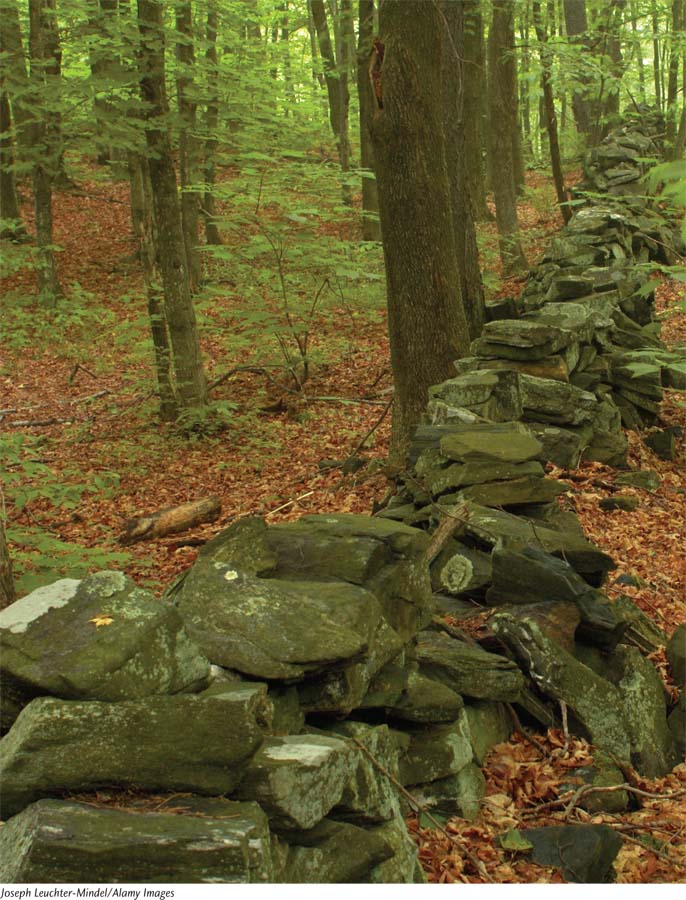Chapter Introduction
chapter 6
Population and Community Ecology

New England Forests Come Full Circle
When the Pilgrims arrived in Massachusetts in 1620, they found immense areas of undisturbed temperate seasonal forest containing a variety of tree species, including sugar maple (Acer saccharum), American beech (Fagus grandifolia), white pine (Pinus strobus), and eastern hemlock (Tsuga canadensis). Over the next 200 years, settlers cut down most of the trees to clear land for farming and housing. This deforestation peaked in the 1800s, at which point up to 80 percent of all New England forests had been cleared. Between 1850 and 1950, however, many people abandoned their New England farms to take jobs in the growing textile industry. Others moved to the Midwest, where farmland was more fertile and considerably less expensive.
The old stone walls that are so common in the New England countryside are the only evidence that this forest was once farmland.
What happened to the former farmland is a testament to the resilience of the forest ecosystem. The transformation began shortly after the farmers left. Seeds of grasses and wildflowers were carried to the abandoned fields by birds or blown there by the wind. Within a year, the fields were carpeted with a large variety of plant species. Eventually, a single group of plants—
Goldenrods and other wildflowers play an important part in old-
The complex interactions among populations of goldenrods, insects, and other species created an ever-
Over time, tree seeds arrived and tree seedlings began to grow, which changed the species composition of the old fields once again. One species in particular, the fast-
White pines dominated the old-
The story of the New England forests shows us that populations can increase or decrease dramatically over time. It also illustrates how species interactions within a community can alter species abundance. Finally, it demonstrates how human activity can alter the distribution and diversity of species within an ecosystem.
Sources: W. P. Carson and R. B. Root, Herbivory and plant species coexistence: Community regulation by an outbreaking phytophagous insect, Ecological Monographs 70 (2000): 73–
A New England forest is a wonderful reminder of the intricate complexity of the natural world. As we saw in this account, there are clear patterns in the distribution and abundance of species over space and time. Understanding the factors that generate these patterns can help us find ways to preserve global biodiversity. These factors include the ways in which populations increase and decrease in size and how species interact in ecological communities. In this chapter, we will examine the factors that help determine the abundance and distribution of populations. We will then look at interactions among species that live within ecological communities and how these interactions further determine whether a species can persist in a particular location on Earth. Finally, we will examine how ecological communities change over time.